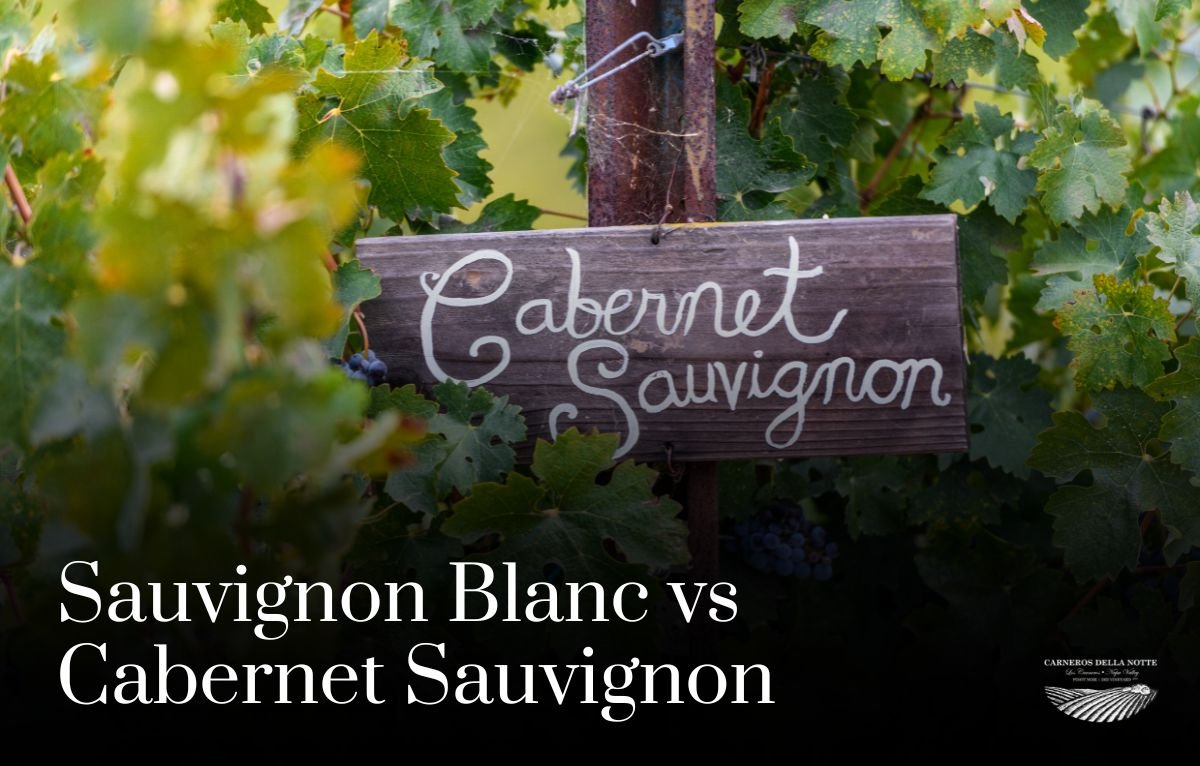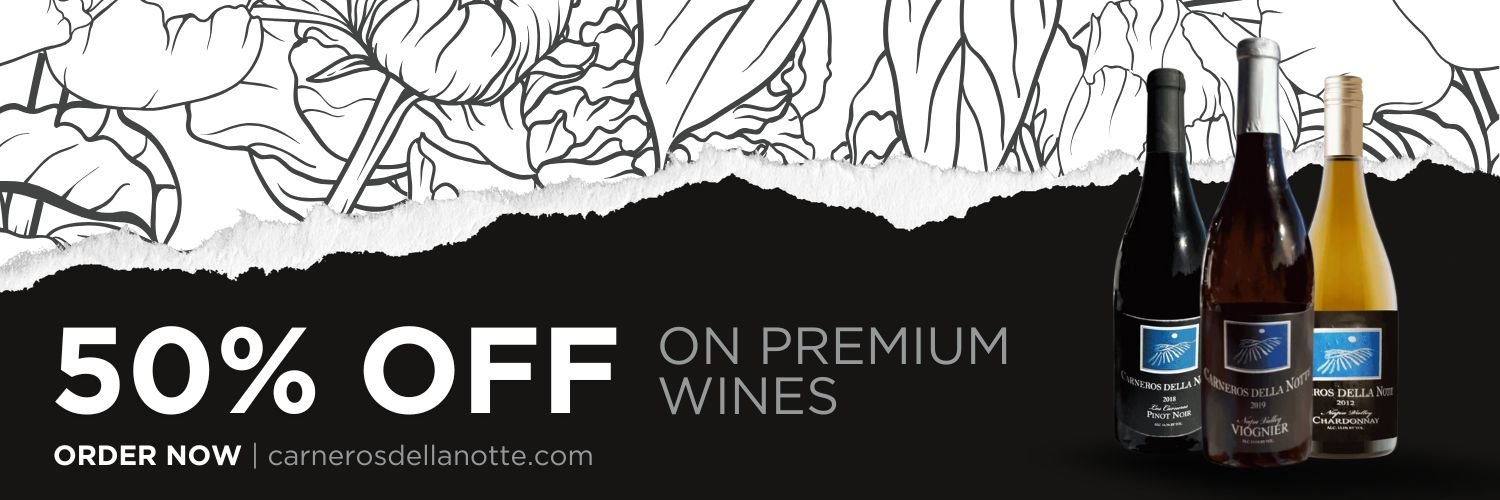If you are just beginning your journey into the world...
Read MoreSauvignon blanc vs cabernet sauvignon represents one of the most exciting contrasts in the world of wine and food.
These two varietals live at opposite ends of the spectrum: one is crisp and lively, the other bold and structured.
When it comes to pairing with meals, their personalities transform the dining experience in unique ways. Understanding how each interacts with food opens the door to creating pairings that feel seamless, memorable, and delicious.
Sauvignon Blanc at the Table
Sauvignon Blanc is known for its vibrant acidity and refreshing flavors. Notes of lime, grapefruit, green apple, and fresh herbs make it a natural partner for lighter fare.
The high acidity helps cut through richness and enhances subtle flavors, making meals feel balanced and lifted.
This is the white wine that shines with goat cheese, seafood, and dishes that incorporate citrus or herbs. Its crisp finish keeps the palate fresh, allowing it to complement multiple courses without overwhelming the food.
The beauty of Sauvignon Blanc is its versatility. A chilled glass can bring life to a picnic lunch, but it also has the refinement to stand beside a plated fine-dining experience.
Few wines carry the same ability to elevate both casual and elegant settings with such consistency.
Cabernet Sauvignon’s Bold Approach
Cabernet Sauvignon could not be more different in style. With deep flavors of blackcurrant, blackberry, and cedar, along with firm tannins, it calls for meals that can stand up to its structure.
The wine’s body and intensity make it a perfect match for meats like steak, lamb, and short ribs.
In addition to its power, Cabernet Sauvignon carries complexity from oak aging, often showing notes of vanilla, spice, or tobacco.
These layers pair beautifully with dishes that have roasted, grilled, or smoky flavors. The experience of Cabernet Sauvignon with food is one of depth, richness, and satisfaction.
This wine also plays a special role in celebratory dining. A glass of Cabernet Sauvignon poured alongside a slow-cooked roast can feel like the centerpiece of a gathering.
Its strength allows it to command attention without overshadowing the food, creating a sense of balance that feels both indulgent and timeless.
Light vs Bold
Comparing sauvignon blanc vs cabernet sauvignon side by side at the table highlights their opposite strengths.
Sauvignon Blanc elevates fresh, delicate foods by sharpening flavors, while Cabernet Sauvignon complements heavier dishes with its weight and grip.
Imagine a dinner party where Sauvignon Blanc accompanies the first course, offering crisp energy with oysters or a salad, and Cabernet Sauvignon carries the main course, enhancing a grilled steak or roasted vegetables. Both wines contribute to the evening, but in entirely different ways.
This duality is part of the joy of pairing. Rather than competing, Sauvignon Blanc and Cabernet Sauvignon can share the same table, providing a full spectrum of experiences across a meal.
Sauvignon Blanc Pairings That Sing
The bright acidity of Sauvignon Blanc thrives when matched with foods that mirror its freshness. Classic pairings include:
- Goat cheese with fresh herbs
- Grilled shrimp with lemon butter
- Green salads with vinaigrette
- Sushi and sashimi
What makes these pairings so successful is the balance of acidity. The wine’s sharpness matches or cuts through the dish, making each bite taste even better. For wine lovers who appreciate meals that feel light and refreshing, Sauvignon Blanc provides the perfect companion.
Cabernet Sauvignon’s Culinary Partners
Cabernet Sauvignon finds its home with dishes that are hearty and savory. A few examples include:
- Ribeye steak with rosemary and garlic
- Braised short ribs with root vegetables
- Grilled lamb chops
- Aged cheddar or gouda
The tannins in Cabernet Sauvignon soften against protein and fat, creating a silky texture on the palate. At the same time, its dark fruit flavors merge with the char and richness of meat, forming a pairing that feels both powerful and harmonious.
Cheese lovers also find joy in Cabernet Sauvignon. Hard, aged cheeses provide the texture and saltiness that balance the wine’s intensity, creating a bite-and-sip combination that lingers long after the meal ends.
Seasonal and Occasion-Based Pairings
Pairings are not just about taste; they also align with seasons and occasions. Sauvignon Blanc often feels right in the warmer months, when lighter meals and outdoor dining dominate.
Think picnics, beachside lunches, and garden parties. Its refreshing character fits effortlessly into these settings.
Cabernet Sauvignon, by contrast, feels most at home in cooler weather or more formal occasions. Its structure and warmth complement autumn feasts, winter dinners by the fire, and celebrations where hearty dishes take center stage.
This sense of occasion is part of what makes Cabernet Sauvignon a staple of special gatherings.
Why Pairing Matters
Food and wine pairings are not a matter of rules but of harmony. The tension between acidity and fat, or between tannins and protein, explains why Sauvignon Blanc and Cabernet Sauvignon pair so differently.
Sauvignon Blanc excels when it refreshes, while Cabernet Sauvignon thrives when it embraces richness.
Together, they show the range wine can bring to the table. One makes delicate dishes shine, the other enhances robust flavors.
Their contrast demonstrates how wine is not only a drink but an essential part of the dining experience.
From the Table to the Cellar
When planning a meal, considering sauvignon blanc vs cabernet sauvignon is also a way to think about building a versatile wine collection.
Having both in the cellar means being prepared for any menu. Sauvignon Blanc covers the light, zesty occasions, while Cabernet Sauvignon handles the bold and celebratory meals. A well-rounded wine lover values the role of both.
This balance also speaks to the joy of exploration. Guests invited to taste both in a single evening often discover how dramatically wine can change the mood of a meal.
It is not about choosing one over the other, but about recognizing their equal importance in the world of food and wine.
Closing the Bottle
The story of sauvignon blanc vs cabernet sauvignon at the table is one of contrast and complement. Sauvignon Blanc delivers freshness that enhances lighter dishes, while Cabernet Sauvignon provides structure and depth for richer meals.
At Carneros della Notte in Napa, we celebrate both traditions, creating wines that highlight balance and character.
For those who believe meals are meant to be shared with the perfect glass, Carneros offers a home where food and wine come together in harmony.
Latest blog & articles
Chardonnay for Beginners: A Friendly Guide to This Popular White Wine
Chardonnay wine stands as a pillar of sophistication in the...
Read MoreWhat Does Pinot Noir Taste Like?
If you’ve ever wondered what does Pinot Noir taste like,...
Read More





